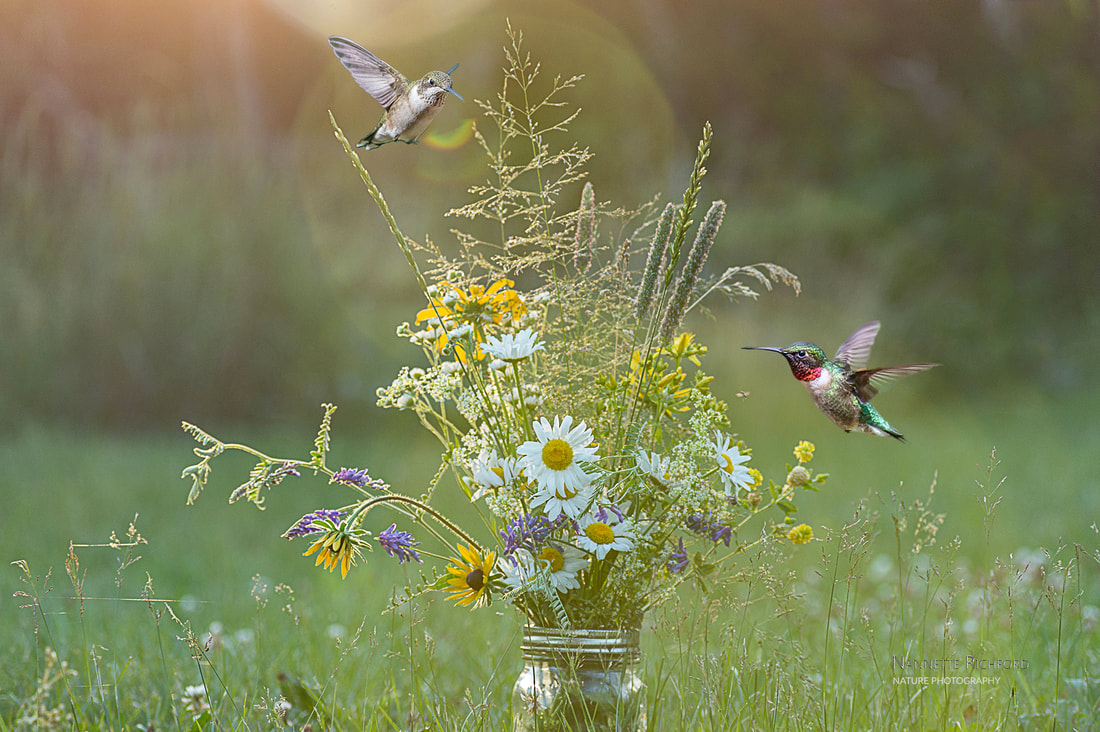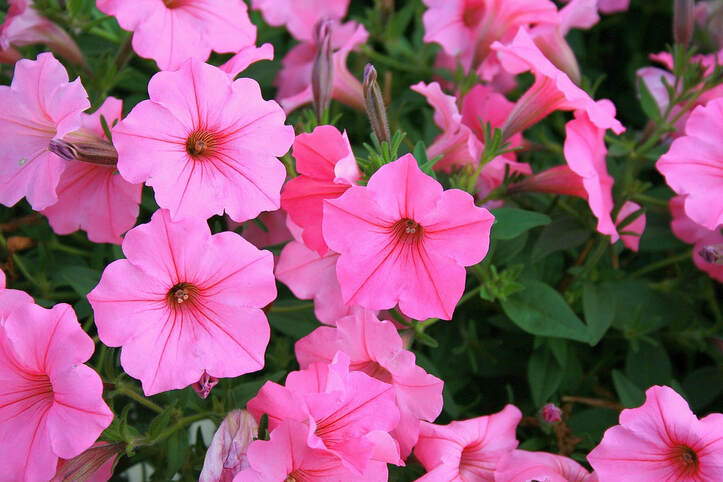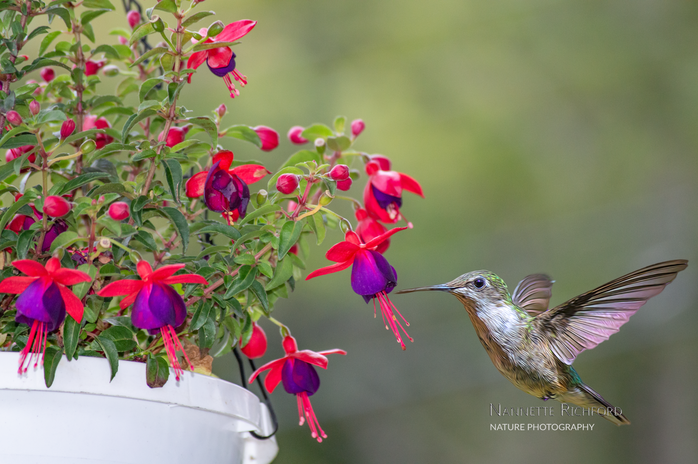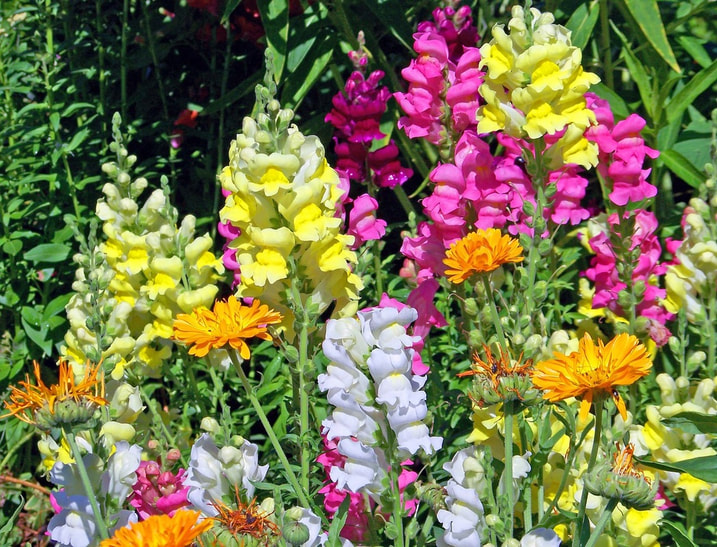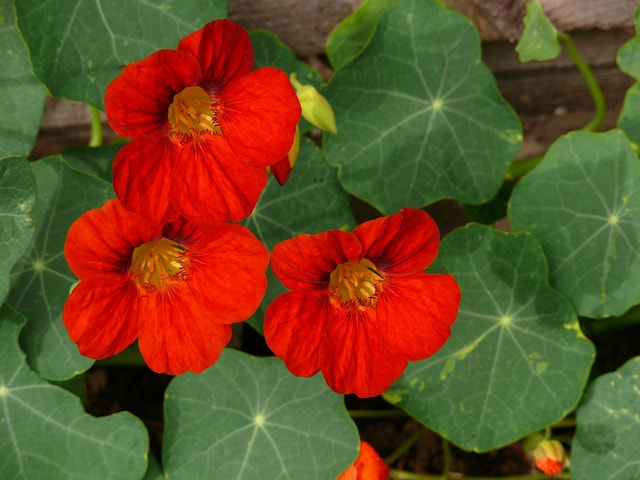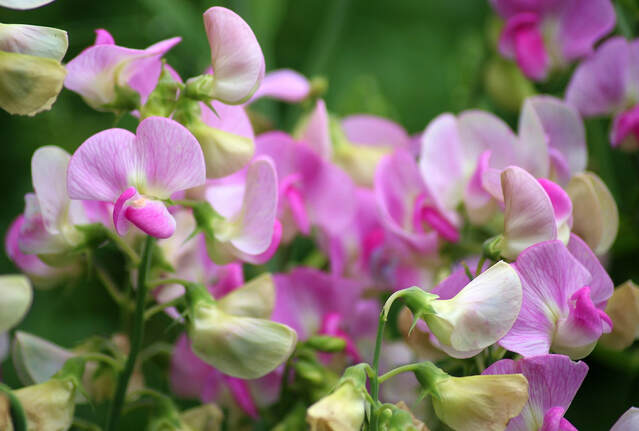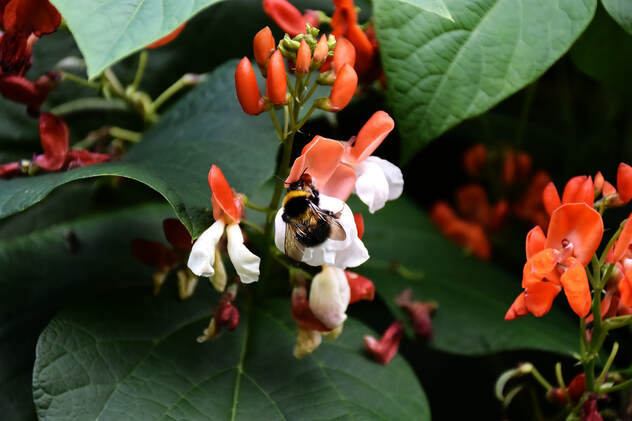Annual Flowers to Attract Hummingbirds
What are the best annuals for hummingbirds?
Hummingbirds prefer brightly-colored tubular flowers as they tend to hold the most nectar. Red, pink and purple flowers are best for attracting hummingbirds, but they will happily sip from any color flower.
Some annuals suitable for hummingbirds include petunias, fuchsias, snapdragons, nasturtiums, sweet peas, and scarlet runner beans.
Petunias
Although petunias are technically a tender perennial, many gardeners in Maine grow them as annuals in the summer garden. Hummingbirds will feed from any color petunia. Try filling hanging baskets with trailing petunias for a striking display of both movement and color.
Petunias are also ideal for window boxes and rock gardens where they are allowed to sprawl. Petunias prefer full or partial sun and perform well in early morning light. Keep the soil evenly moist and deadhead old blooms regularly to keep petunias blooming until the frost in the fall.
Fuchsias
Fuchsia flowers grab the attention of hummingbirds and offer the traditional cup-shaped flower that hummingbirds prefer. Color doesn’t matter as once hummingbirds discover your fuchsia plants they will return throughout the day.
Fuchsia flowers come in a wide assortment of colors and make gorgeous hanging baskets. They prefer partial sun to shade and need fertilizing every 10 to 14 days to keep them blooming all summer. Keep the soil evenly moist.
Fuchsia plants do drop the old blooms frequently and can be messy when grown on the deck, but most agree their beauty outweighs the nuisance of cleaning up old blooms.
Fuchsia flowers come in a wide assortment of colors and make gorgeous hanging baskets. They prefer partial sun to shade and need fertilizing every 10 to 14 days to keep them blooming all summer. Keep the soil evenly moist.
Fuchsia plants do drop the old blooms frequently and can be messy when grown on the deck, but most agree their beauty outweighs the nuisance of cleaning up old blooms.
Snapdragons
Snapdragons are an old fashioned favorite reminiscent of Early American gardens. Add snapdragons to the center of flowerbeds or as borders to attract hummingbirds to the garden.
Snapdragons range in height from dwarfs of 6 to 8 inches to towering plants of 4 feet or more. Blooms range form yellow and orange to pink and nearly red. Snapdragons prefer full sun and evenly moist soil.
These delightful flower earned their name from the appearance of the tiny flowers lining the spire. They are shaped like a miniature dragon head. When squeezed between the thumb and finger the tiny jaw opens. When released it quickly snaps shut like the jaw of dragon. Kid's delight in snapdragons.
Plant snapdragon plants in your garden to attract hummingbirds.
Snapdragons range in height from dwarfs of 6 to 8 inches to towering plants of 4 feet or more. Blooms range form yellow and orange to pink and nearly red. Snapdragons prefer full sun and evenly moist soil.
These delightful flower earned their name from the appearance of the tiny flowers lining the spire. They are shaped like a miniature dragon head. When squeezed between the thumb and finger the tiny jaw opens. When released it quickly snaps shut like the jaw of dragon. Kid's delight in snapdragons.
Plant snapdragon plants in your garden to attract hummingbirds.
Nasturtiums
Hummingbirds love nasturtiums and will return to them throughout the day.
Plant nasturtiums from seed in late spring once the danger of frost has passed in your area for a colorful display of flowers by mid summer. They range from dwarf to climbing varieties and colors range from whites and yellows to brilliant shades of red and orange.
Tuck nasturtiums into baskets, containers or window boxes for a splash of color – or try climbing nasturtiums along trellises and fences.
Nasturtiums do best in full sun, but can tolerate some shade. Keep the soil evenly moist and deadhead old blooms regularly. Alaskan nasturtiums produce beautiful variegated foliage.
Nasturtium blooms are also edible. Try nasturtium flowers in your salads to add a spicy kick.
Plant nasturtiums from seed in late spring once the danger of frost has passed in your area for a colorful display of flowers by mid summer. They range from dwarf to climbing varieties and colors range from whites and yellows to brilliant shades of red and orange.
Tuck nasturtiums into baskets, containers or window boxes for a splash of color – or try climbing nasturtiums along trellises and fences.
Nasturtiums do best in full sun, but can tolerate some shade. Keep the soil evenly moist and deadhead old blooms regularly. Alaskan nasturtiums produce beautiful variegated foliage.
Nasturtium blooms are also edible. Try nasturtium flowers in your salads to add a spicy kick.
Sweet Peas
Climbing sweet peas are sure to attract the attention of the hummingbirds in your yard.
Sweet peas are an old fashioned flower that has been grown in flowerbeds in Maine for generations. Newer varieties have larger blooms in a wider range of colors, but they often lack the intense fragrance of their old fashioned ancestors.
Try sweet peas for a vining plant that attracts hummingbirds. These plants produce an assortment of blooms that range from white and pale pink to rich purples and reds.
Sweet peas perform best in cool, moist soil. Plant them where the roots are in shade and the foliage is in the sun.
A trellis or garden wall covered with sweet peas will keep your hummingbirds busy all day.
Sweet peas are an old fashioned flower that has been grown in flowerbeds in Maine for generations. Newer varieties have larger blooms in a wider range of colors, but they often lack the intense fragrance of their old fashioned ancestors.
Try sweet peas for a vining plant that attracts hummingbirds. These plants produce an assortment of blooms that range from white and pale pink to rich purples and reds.
Sweet peas perform best in cool, moist soil. Plant them where the roots are in shade and the foliage is in the sun.
A trellis or garden wall covered with sweet peas will keep your hummingbirds busy all day.
Scarlet Runner Beans
For a bit of bright color, try scarlet runner beans. These plants are grown like any other climbing bean but produce ‘scarlet red’ blooms. Cover a wall or arch with scarlet runner beans for a striking display of movement and color as hummingbirds dart among the flowers.
As an added bonus, the runner beans produce edible pods.
As an added bonus, the runner beans produce edible pods.
